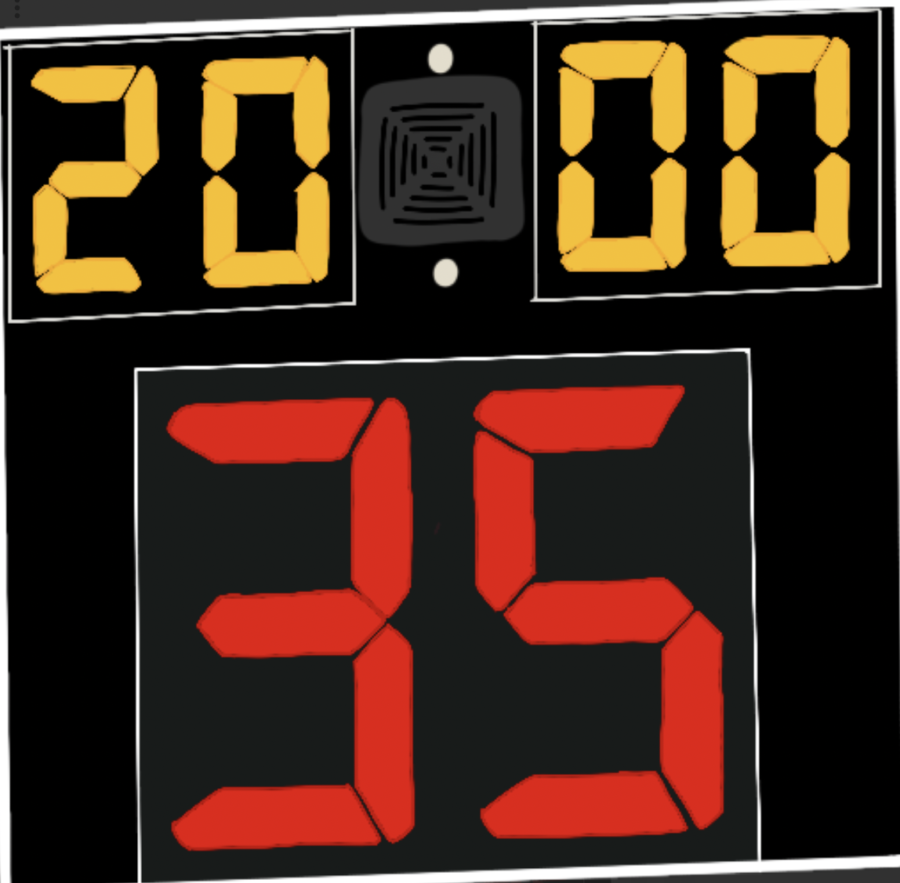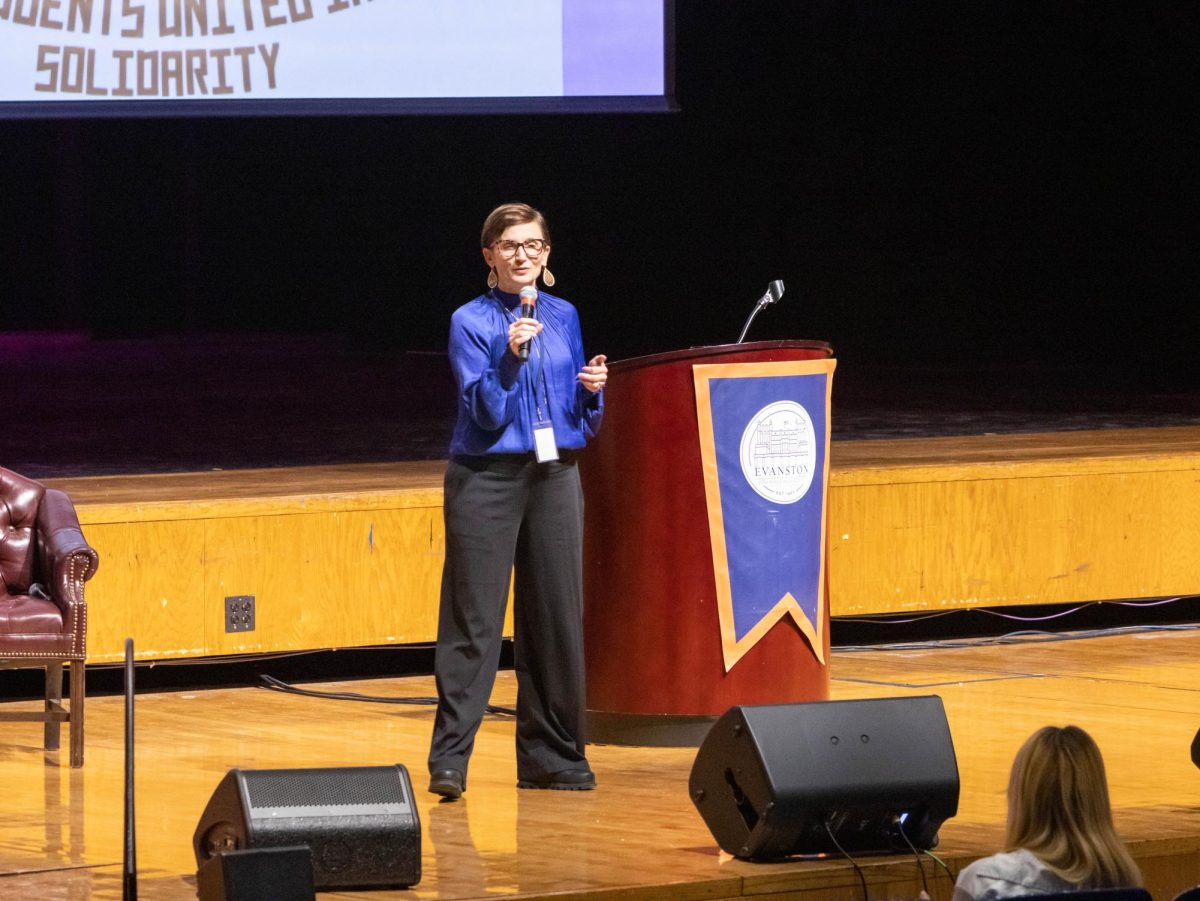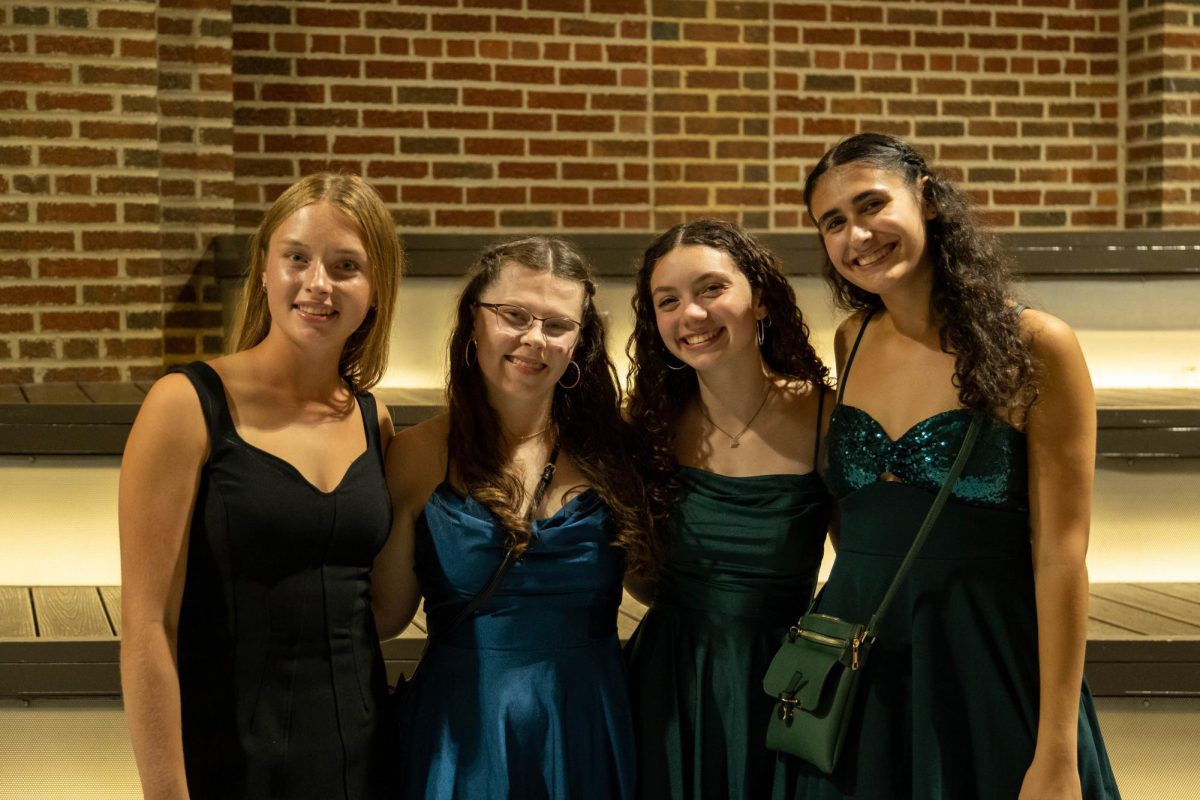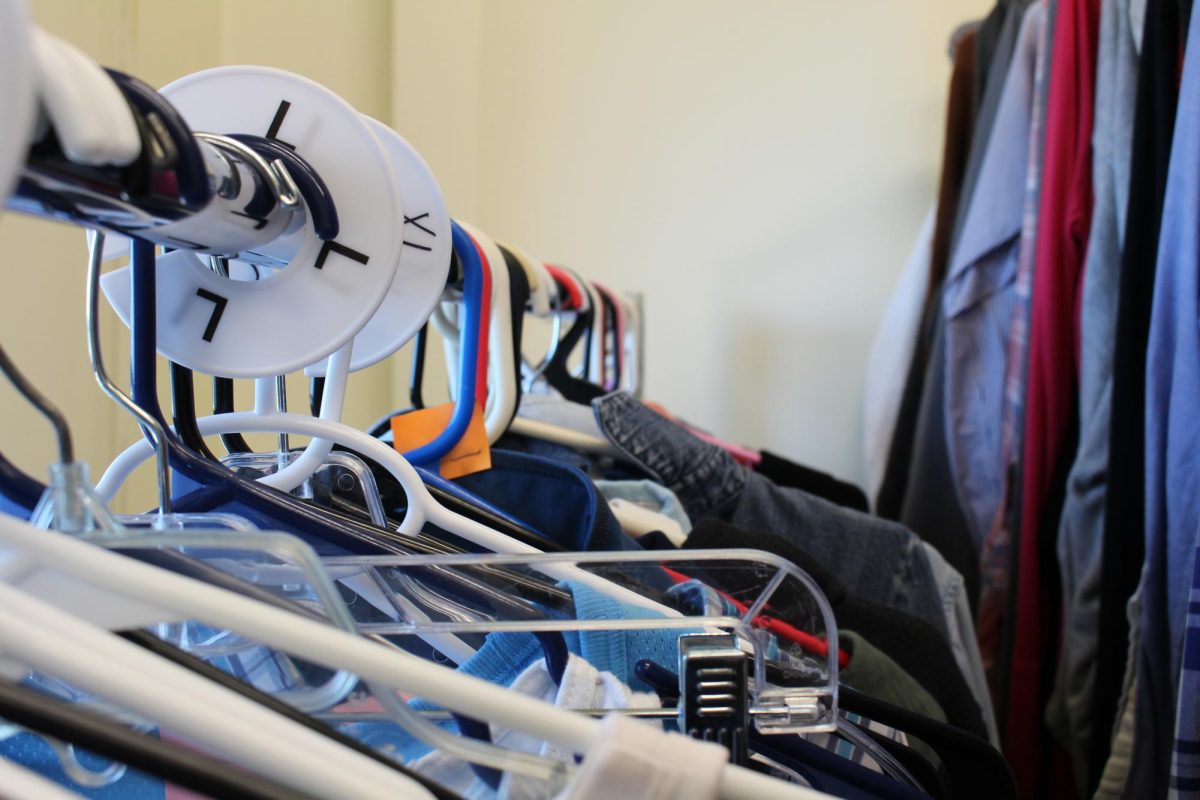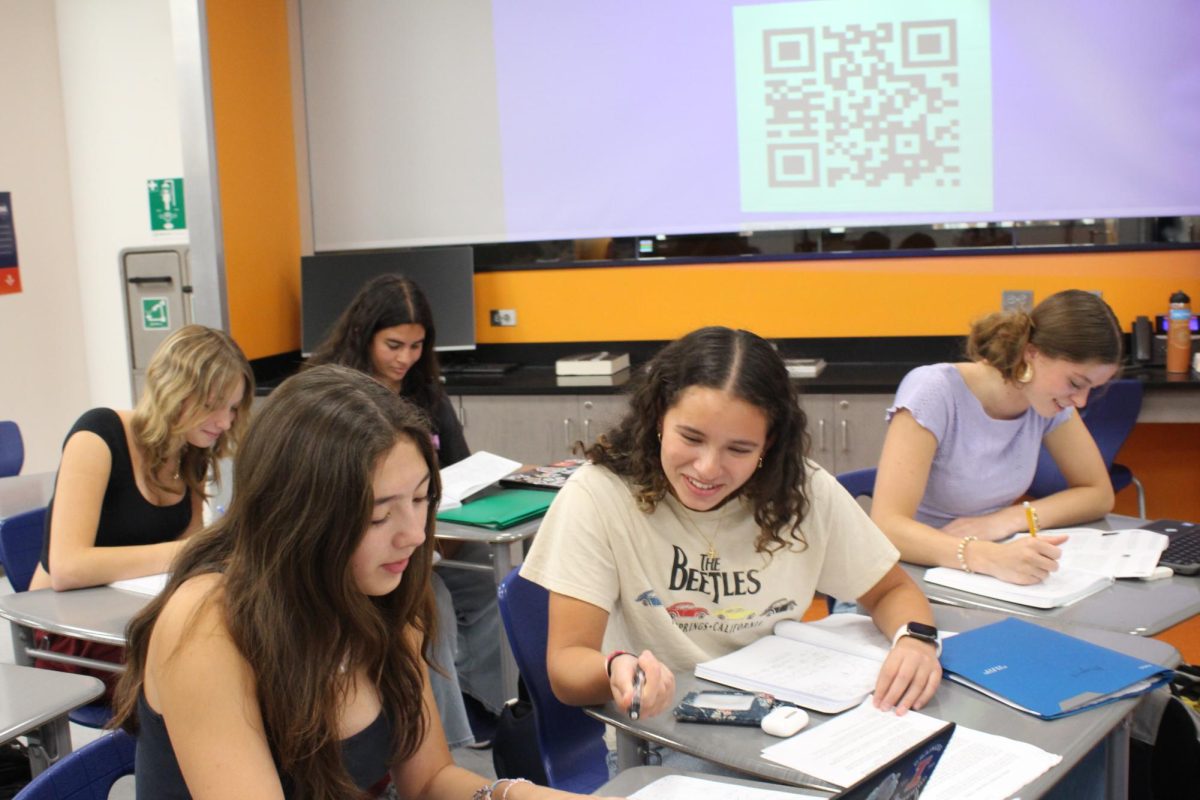It’s worth a shot
ETHS head boys basketball coach leads push to mandate use of a shot clock in all IHSA contests, prevent teams from running clock
April 20, 2023
Four to two.
That was the actual score of a high school basketball game in Oklahoma in February this year.
“There’s numerous instances where someone will be playing in a game or watching a game in high school, where one team has possession of the ball for over two minutes at a time. It happens a lot,” said ETHS varsity basketball coach Mike Ellis. “But we’re not talking about just extended stalling. We’re talking about whole games. It’s ridiculous.”
After years and years of teams holding the ball for an extended number of minutes in high school basketball–leading to long, empty possessions late in every game–the push for a shot clock is finally being ignited by IHSA coaches. Teams winning games while scoring less than 30 points has caught the eye of many Illinois basketball fans. Even a 24-19 game in the Chicagoland area this year has grabbed the attention of four coaches. In addition to Ellis, Coach Matt Monroe of St. Ignatius, Pat Woods of St. Charles East and Whitney Young Coach Tyrone Slaughter have led the charge for a shot clock. The four coaches created a lengthy presentation with data, quotes, surveys and videos that outlines numerous reasons for the approval of a shot clock, from a coach, player and spectator standpoint. The presentation was sent to IHSA in the fall of 2021.
While a national mandate for a shot clock has not yet been approved, the National Federation of State High School Associations (NFHS) permitted their use by state association adoption in 2021. In accordance with Rule 2-14, each state would be able to adopt a procedure that implements a 35-second shot clock for both boys and girls basketball effective with the 2022-23 season. So far, thirteen states have mandated one.
“The shot clock speeds up the game. It creates more excitement for the fans. It makes the players have to have more skill to be able to create more on their own,” Monroe stated. “It gives coaches a chance to be more creative in terms of end of game situations, and players enjoy it too. It’s a more fun game to play.”
“The biggest difference is at the end of quarters at the end of games. Teams are holding it for unspeakable amounts of time and it really takes the fun out of the game. In many regards, I think the shot clock prevents that from happening.”
For the 2022-2023 season, The IHSA Board of Directors approved a 35-second shot clock for high school regular season tournaments and shootouts. ETHS played three shootouts with a shot clock this season against Marian Catholic, Glenbard West and Hempstead (IA). But there has been no official word from the state on the use of shot clocks on all games going forward.
From a coaching perspective, the shot clock is overwhelmingly popular. A survey organized by the Illinois Basketball Coaches Association (IBCA) gathered nearly 900 votes from boys and girls coaches across the state and found that 72 percent of coaches are in favor of a shot clock. From faster paced games to coaching players on how to play quick possession basketball used at the collegiate and professional level, the shot clock brings an element of strategy that Ellis emphasized is necessary for Illinois going forward.
“The strategic part about the game when you’re protecting a two or three possession lead is so important. Not having a shot clock goes both ways. If we’re up five or six with three minutes to go, we’re not going to be in a hurry to shoot. We’ll just make free throws,” said Ellis. “But look– no one wants to come and see the final four [minutes] of a game decided by a free throw contest. You’re going to add up to ten more possessions at the end of games with a shot clock. Trying to get a good shot but also protecting a lead is just how basketball should look.”
From a player perspective, the shot clock simply makes the game more fun.
“Throughout the three games we played, more shots were put up and obviously you don’t just want to sit there and see a team hold the ball,” said junior guard Brandon Watson. “It was fun too. I think we played better with a shot clock because we could play at our pace. We can score a lot more playing at our pace with a [shot clock].”
So what’s holding Illinois back from issuing a statewide shot clock in every game going forward?
The main obstacle in the way is price. The low end of a shot clock is around $2000 (which the presentation recognizes is less than the cost of a new set of uniforms), with the most advanced systems ranging north of $16,000. However, for something that’s so crucial to the game, Monroe believes schools need to find a way to get it done, similar to how all schools had to adjust to when the three point line was added in 1987.
“Every single time something has been changed in the game, there’s a cost associated with it. When they put the three-point line in the 80’s, that was a cost. People had to repaint their courts,” said Monroe. “But it was something that was lasting and necessary. There’s always a cost with running things. I think the benefit of playing with the shot clock outweighs that.”
The other roadblock is making sure all schools are on board with the shot clock. Monroe recognizes that some southern Illinois programs are against the shot clock because of the lack of potential operators needed at every game.
“The survey we conducted was very different between Chicagoland schools and [southern] Illinois schools for a number of legitimate reasons. The lack of unanimous support is the reason the process is moving a bit slower, but it’s not because of the actual benefits of the shot clock,” Monroe stated. “It’s more about finding people to actually run the clock. In smaller towns, that can be more difficult.”
But regardless, both coaches are hopeful for the future. The introductory phase in tournaments and shootouts was successful, with teams all across the state reporting their support for the shot clock. Ellis is looking forward to what’s to come.
“All the cards are in the IHSA’s hands and we’re just sitting at the table. It’s only a matter of time before not just Illinois, but all 50 states are going to have a shot clock. [I’m] excited for what’s next.”


